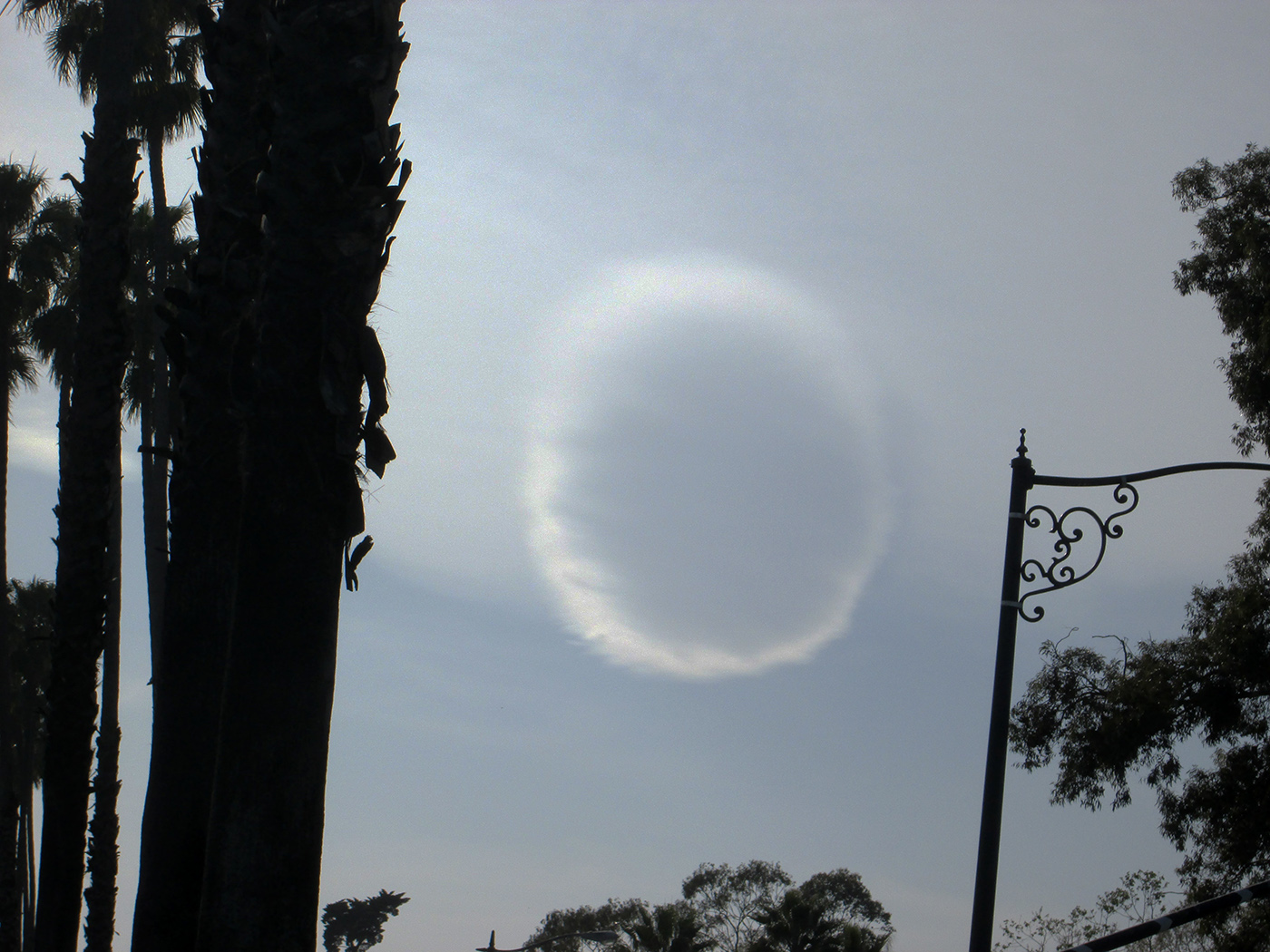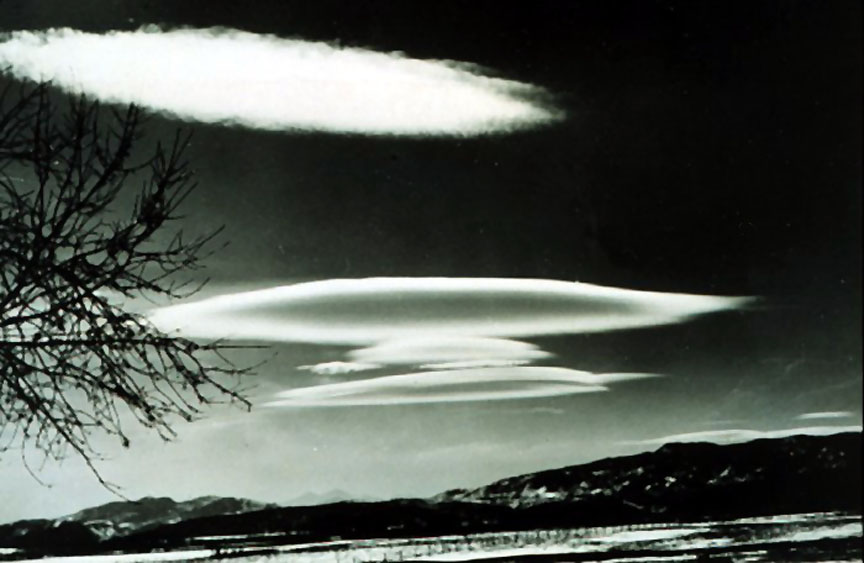Neither, as it turned out. Exhibitors and customers at the Santa Barbara Arts and Crafts Show were treated to an unusual sight on Sunday afternoon, March 17, 2013. The show was winding down when what looked like a giant smoke ring was spotted in the sky, high above Cabrillo Boulevard. Most of the observers of the phenomenon were sober at 2:00 pm, even though it was St. Patrick’s Day and celebrations have been known to start much earlier. Fingers and cameras began to point and click, and, predictably, there were lots of jokes about UFO’s, the new Pope, and white smoke in general.
Ken Beddingfield, an artist exhibiting at the show, took the accompanying photos between 4:20 and 4:45 pm, and he identified the apparition as being a lenticular cloud formation. “Lenticular clouds (Altocumulus lenticularis) are stationary lens-shaped clouds that form at high altitudes, normally in perpendicular alignment to the wind direction. Lenticular clouds can be separated into altocumulus standing lenticularis (ACSL), stratocumulus standing lenticular (SCSL), and cirrocumulus standing lenticular (CCSL). Due to their shape, they have been offered as an explanation for some Unidentified Flying Object (UFO) sightings” (Wikipedia: Lenticular cloud).
“Where stable moist air flows over a mountain or a range of mountains, a series of large-scale standing waves may form on the downwind side. If the temperature at the crest of the wave drops to the dew point, moisture in the air may condense to form lenticular clouds. As the moist air moves back down into the trough of the wave, the cloud may evaporate back into vapor. Under certain conditions, long strings of lenticular clouds can form near the crest of each successive wave, creating a formation known as a “wave cloud.” The wave systems cause large vertical air movements and so enough water vapor may condense to produce precipitation. The clouds have been mistaken for UFOs (or ‘visual cover’ for UFOs) because these clouds have a characteristic lens appearance and smooth saucer-like shape. Bright colors (called irisation) are sometimes seen along the edge of lenticular clouds. These clouds have also been known to form in cases where a mountain does not exist, but rather as the result of shear winds created by a front” (Ibid.).
Article by Bill Norrington





